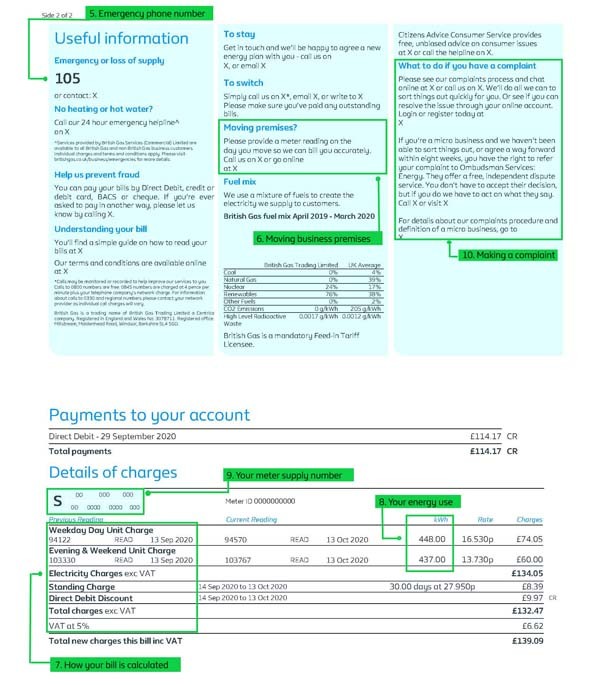Cracking the Code: How to Interpret Your Electricity Bill
Do you ever find yourself staring blankly at your electricity bill, wondering how to make sense of all the numbers and jargon? If so, you’re not alone. Many UK households struggle to understand their electricity bills, which can lead to confusion and even overpayment. However, with a little knowledge and some guidance, you can learn to read your electricity bill like a pro. ![]()
Understanding the Different Parts of Your Electricity Bill
The first step to decoding your electricity bill is to understand the different parts that make it up. Your bill is divided into several sections, each of which provides important information about your energy consumption and charges. Each company has a different format for their bills, but, all of them show you at least the following:
- Your account details: This section contains your account number, the date of the bill, and your personal details.
- Your tariff information: Here, you’ll find details of your energy tariff, including the name of your tariff, the unit rate you’re being charged, and any discounts or special offers.
- Your energy usage: This section shows your energy usage over the billing period in kilowatt hours (kWh), as well as the amount you’re being charged for it.
- Your payments: This section details any payments you’ve made since your last bill, as well as any outstanding balance you may have.
- Other charges: This section may include any additional charges you’ve incurred, such as for meter readings or debt collection.


Reading Your Electricity Meter
To understand your electricity bill fully, you’ll need to know how to read your electricity meter. Your meter measures the amount of energy you use, which is then used to calculate your bill. There are two main types of electricity meters: digital meters and traditional meters.
Digital meters are the most common type in the UK, and they display your energy usage on a digital screen. To read your digital meter, simply look for the number sequence that corresponds to your energy usage in kWh.
Traditional meters are the older, analogue type of meter that use dials to measure energy usage. Reading a traditional meter can be a little more complex, but there are many online guides and tutorials available to help.
Understanding Your Energy Consumption
Once you know how to read your electricity meter and understand the different parts of your bill, it’s time to start thinking about your energy consumption. There are many simple steps you can take to reduce your energy usage and lower your bills.
One of the most effective ways to reduce your energy consumption is to switch to energy-efficient appliances and light bulbs. Energy-efficient appliances use less energy to do the same job, which can significantly reduce your bills over time.
Another way to reduce your energy usage is to make small changes to your daily habits. For example, turning off lights when you leave a room, unplugging electronics when they’re not in use, and setting your thermostat a degree or two lower can all add up to significant savings.
Conclusion
By taking the time to understand your electricity bill and meter, and by making simple changes to your energy consumption habits, you can significantly reduce your electricity bills and save money. If you’re still struggling to make sense of your bill, don’t hesitate to contact your energy supplier for guidance and support.
You can read more posts like this on our blog plage.